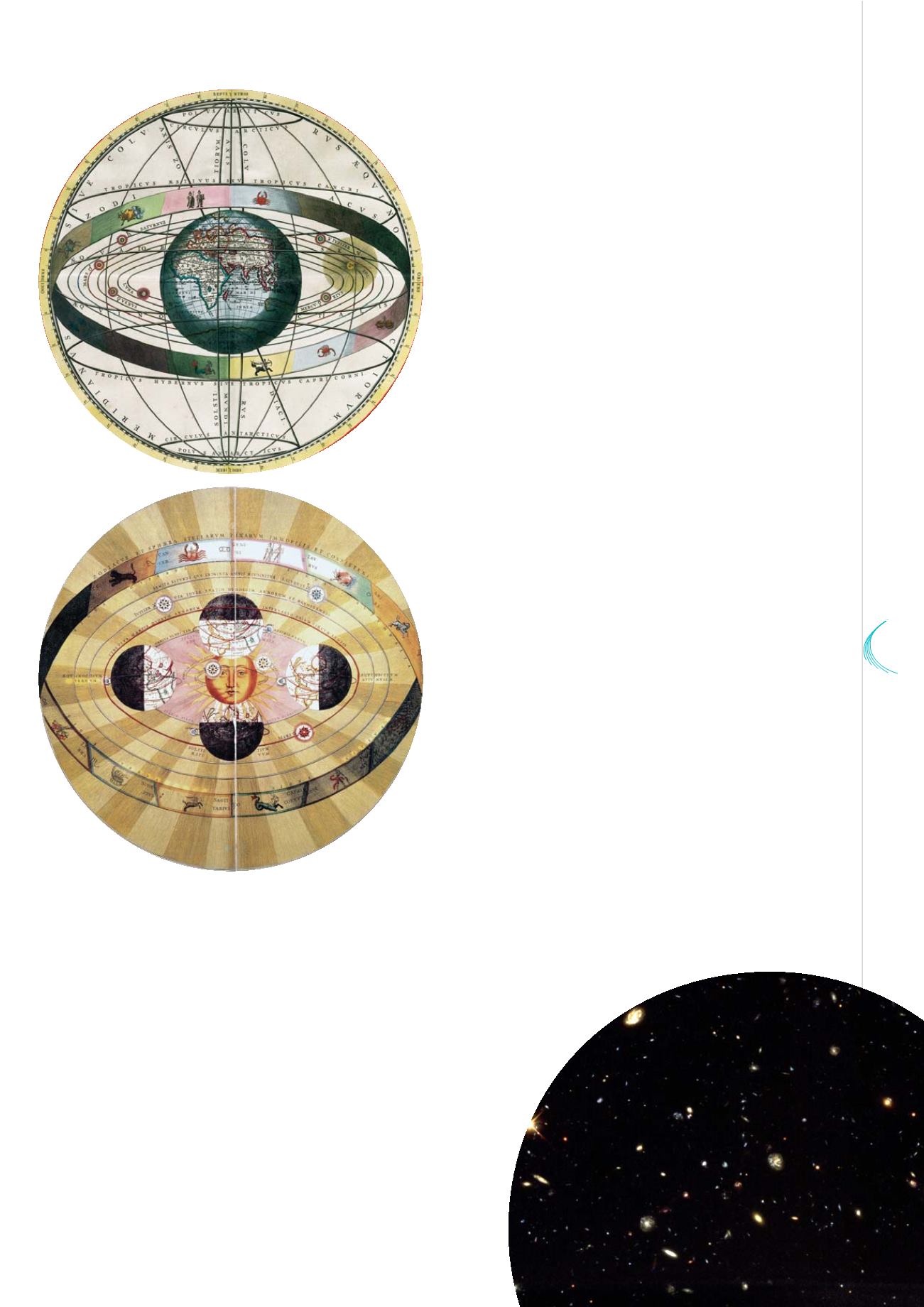

350
YEARS
OF
SCIENCE
57
© Photo Researchers, Inc - Alamy
© Granger Historical Picture Archive - Alamy
An image from the Hubble Ultra Deep Field
© R. Williams (STScI), équipe HDF-S, et NASA/ESA
The Century of the Enlightenment would resolutely
feed a taste for scientific exploration, whether on
Earth, sea or sky, and theories would follow to
explain the observations of the great naturalists
(Buffon, Lamarck), geographers (Von Humboldt),
geologists (Hutton, Cuvier and, later, Brongniart)
and astronomers (Cassini, Lalande, La Caille)
of the time. It is established that Earth revolves
around the sun or that it was not formed in six days
some thousand years ago. Drawing on the study
of the cooling time of metal spheres from various
diameters, Buffon calculated that 10 million years
was the age of our planet.
Astronomers built telescopes to probe the sky
with ever-growing precision and sensitivity. The
catalogues of the stars and nebulae, much in the
way of the observation reports that naturalists
compiled, became more and more detailed. They
allowed Messier and Herschel to classify the stars
with ever-increasing precision, which was a very
useful preamble to physically understand them.
In the 19
th
Century, the theoretical and experimental
works of Young, Fresnel, Foucault and Maxwell
provided support for the wave-like nature of light
that Huygens had put forward for consideration in
1670, and allowed for its speed to be measured.
Fraunhofer invented the spectroscope and it
became possible to study the chemical composition
of the atmospheres of the sun, planets, solar system
and, later, stars and galaxies. The Doppler-Fizeau
effect made it possible to measure the speed of stars
with reference to an observer located on Earth. This
effect, indeed, would be decisive in showing that
the galaxies moved away from each other and in
establishing the expansion of the Universe during the
1920s as Lemaître and Hubble did, which Einstein’s
theory of general Relativity accounted for.
Two systems describing the world : the
geocentric system (Ptolemy, on the left)
and the heliocentric system (Copernicus,
on the right). The Harmonia Macrocosmica
of Andreas Cellarius (1660).


















